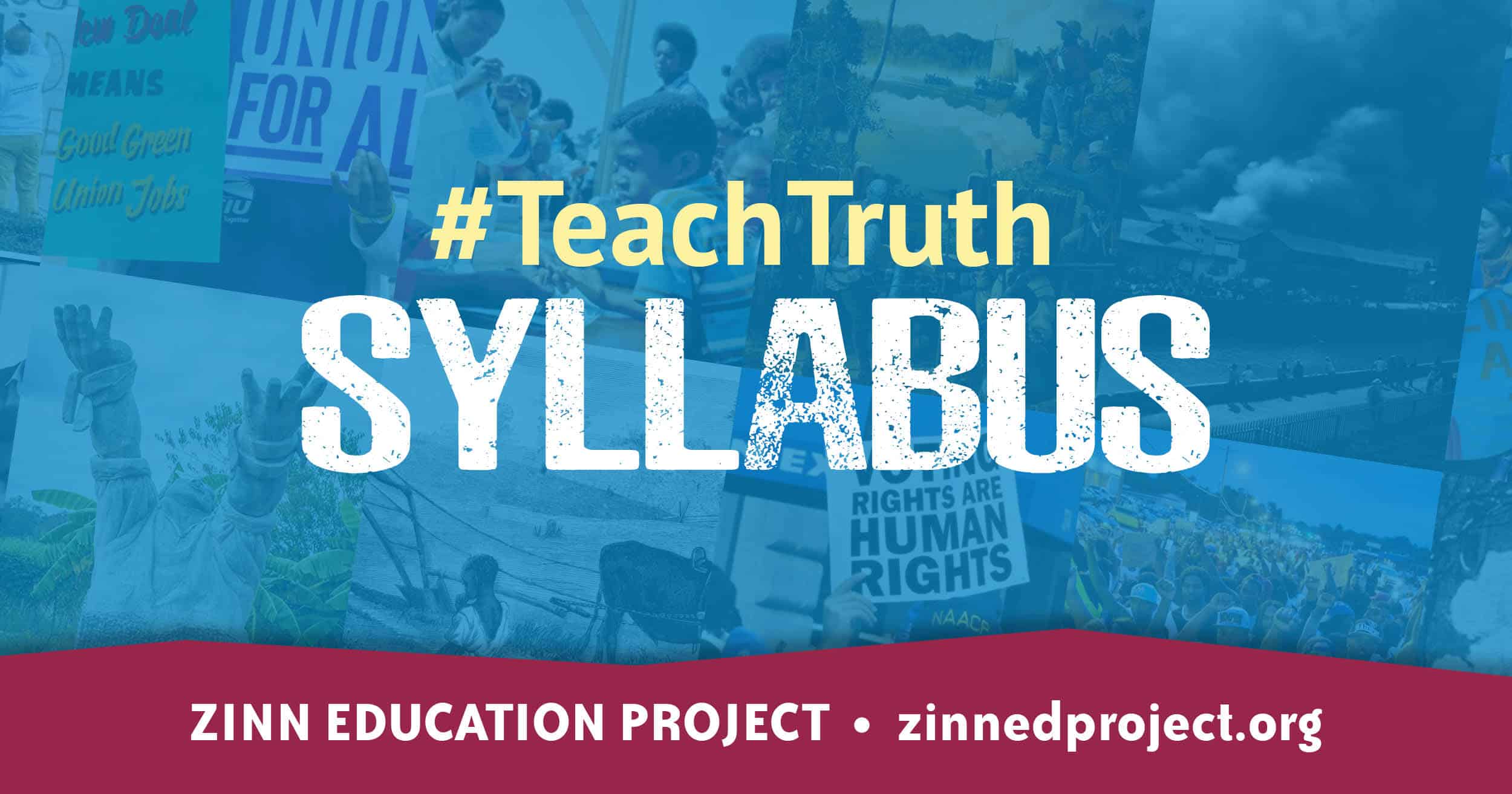Executive Orders on language, education, and climate have a profound impact on students’ lives. Therefore, young people should be invited to read and critique them. The Hillsdale College 1776 Curriculum is another text that merits critical attention. We asked teachers to share stories about how they are doing just that.
Here are three we’ve received so far.
Chicago, Illinois
7th and 8th grade social studies teacher, Claire Koster
My students and I studied one of the new executive orders, Ending Radical Indoctrination in K-12 Education.
I prepared handouts with executive order excerpts and questions. These were placed in envelopes for students to read and discuss in pairs or groups of three. They would receive an envelope, investigate it, answer the corresponding questions (which were posted around the room), and then come back to me to get the next envelope. This allowed them to read the EO in sections. It didn’t matter which order they were in.
I wanted kids to draw connections between the way we learn history and the way executive orders encourage us to learn history.
Students were engaged and had sharp insights. Here are some of their responses to my question, “What is a patriotic education?”
I think a patriotic education is where American history is mostly, if not completely, censored or glamorized. Especially parts of history where Americans may be in the wrong. This makes America seem perfect, when it’s really not.
A patriotic education is an education that makes America look good.
Patriotic education is a way of teaching people that live in America that makes America look better than it is.
Our school is politically diverse. I let students know that my job is to give them primary sources, and their job is to come to their own conclusions.
Note: I left out the part of the Executive Order about gender for a variety of reasons. I teach middle school, and there is a wide gap between students’ background knowledge on gender. For students who are personally impacted, they already know the world does not treat them justly. For kids who do not have personal connections, sometimes there are harsh comments made that hurt kids who are already holding a lot.
Durham, North Carolina
6th-grade science teacher, Jenna
We have been listening to news segments and reading executive orders together. While they need help with some of the language, they are deeply troubled by the text. I print out the EO, provide students with highlighters, and we take turns reading the text out loud, marking things we had questions about or wanted to talk about. All these discussions led us to many questions about how the federal government works.
We used the Learning for Justice “Roles and Responsibilities of the President” resource. As we look at the EO text and consider how to hold our president accountable, students have been confused and angry by the disparity they see.
My goal is for my students to feel empowered and not overwhelmed by despair. Students have space to feel anger and sadness. They also find a way to stay informed without stopping their lives.
Washington, D.C.
High school social studies teacher, Esther Fitts
I teach 10th grade World History. In our World War II unit, students used President Roosevelt’s 1944 Executive Order 9066 to analyze President Trump’s 2017 Executive Order 13780.
In 1944, Roosevelt issued Executive Order 9066 to incarcerate approximately 120,000 Japanese Americans, profiling them as more likely to commit acts of espionage during a time of war. In 2017, Trump issued an executive order nicknamed the “Muslim Ban” because it banned the issuance of visas to immigrants and refugees from a list of Muslim-majority countries; he framed Muslims as a threat to the country. Each executive order was issued in the name of national security.
My students use history as a tool to contribute to their sense of what is right and wrong — of what is just and unjust. Through writing a policy memo to the 2017 administration on its “Muslim ban,” students used their historical investigation of an executive order in 1944 to inform and communicate their opinions on an executive order in 2017. Here are excerpts from some of their policy memos:
We cannot repeat history and ban entire cultures of people from entering our country. America is a melting pot of culture and ethnicity, and instituting this ban will push an agenda of racism, segregation, and fear-fueled hatred in our country.
The U.S. Constitution was created to protect the life, liberty, and happiness of its citizens, and Executive Order 13780 directly defies that . . . We, as your policy advisors, respectfully ask you to look back on history and reflect on the damage ignorance and discrimination have had on our country (specifically Korematsu v. United States) and make the constitutionally, morally, and humane decision to rescind Executive Order 13780.
This executive order must be overturned and removed due to the unconstitutionality of using government policy to discriminate against a certain race or religion, in this case Muslim people. The order’s policy serves a message to the citizens of the United States that Muslim people are terrorists and dangerous. This discriminative and xenophobic message can spark widespread animosity across the United States towards people who identify as Muslim. It makes discrimination normalized. The U.S. Constitution was created to protect the life, liberty, and happiness of its citizens. Executive Order 13780 directly clashes with the Constitution’s message of protection.
Such attention to history that seems to be lacking in today’s politics might help us avoid repeating the mistakes of the past.
Share your story and we’ll send people’s history books to you in appreciation.







Twitter
Google plus
LinkedIn